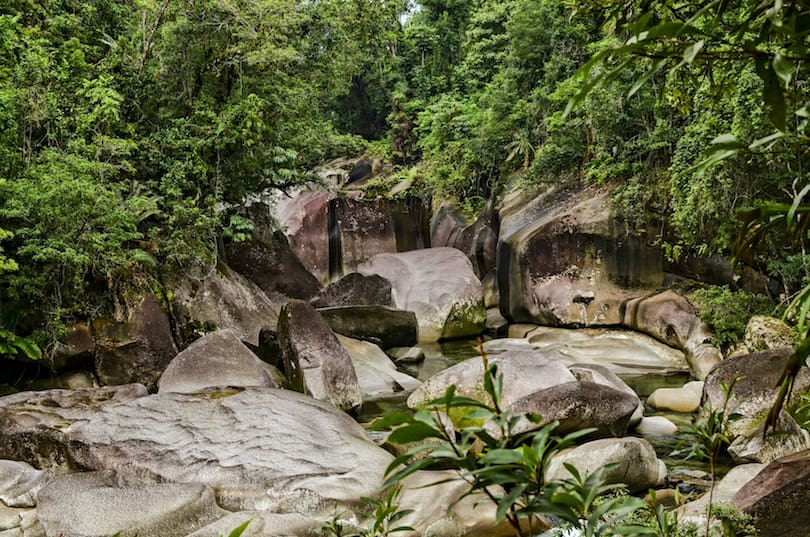West Bengal, a state known for its rich cultural heritage and diverse landscapes, is also home to some of India’s most breathtaking national parks. From the majestic Himalayan foothills to the lush mangrove forests of the Sundarbans, these protected areas offer unparalleled opportunities to witness incredible wildlife, explore pristine ecosystems, and immerse yourself in nature’s beauty. Whether you’re an avid wildlife enthusiast or simply seeking tranquility, the top 5 national parks in West Bengal promise unforgettable experiences. Let’s dive into these remarkable destinations that showcase the state’s natural treasures.
1. Sundarbans National Park: The Land of the Royal Bengal Tiger
Why Sundarbans Stands Out
Nestled in the southernmost tip of West Bengal, Sundarbans National Park is a UNESCO World Heritage Site and one of the largest mangrove forests in the world. Spanning over 1,330 square kilometers, this unique ecosystem is a haven for biodiversity and home to the iconic Royal Bengal Tiger , making it a must-visit destination for wildlife lovers. The park’s intricate network of tidal rivers, mudflats, and dense mangroves creates a mysterious and enchanting atmosphere that captivates visitors.
Flora and Fauna
The Sundarbans are characterized by their intricate network of tidal rivers, mudflats, and dense mangroves. This habitat supports a wide array of species:
- Royal Bengal Tigers: The park is renowned for its population of tigers, which have adapted to the challenging mangrove environment. These tigers are skilled swimmers and often navigate the waterways in search of prey.
- Estuarine Crocodiles: These massive reptiles are often spotted basking along riverbanks. Their presence adds an element of thrill to any boat safari.
- Spotted Deer (Chital): These graceful herbivores are commonly seen grazing in open areas near water sources.
- Birdlife: Over 260 bird species, including kingfishers, herons, and eagles, thrive in this wetland paradise. Migratory birds flock here during winter, adding vibrancy to the skies.
Must-Visit Attractions Inside the Park
- Sajnekhali Bird Sanctuary: A hotspot for birdwatchers, this area is home to migratory and resident birds like the white-bellied sea eagle and brown-winged kingfisher. Early mornings and late afternoons are ideal times to spot these avian wonders.
- Sudhanyakhali Watchtower: One of the best spots for tiger sightings, this elevated platform offers panoramic views of the surrounding forest. Visitors often spend hours here, hoping to catch a glimpse of the elusive predator.
- Bhagabatpur Crocodile Project: Dedicated to conserving estuarine crocodiles, this breeding center provides insight into the park’s conservation efforts. Guided tours explain how hatchlings are nurtured until they are ready to be released into the wild.
Activities for Visitors
- Boat Safaris: Explore the waterways via motorized boats, gliding past mangroves and spotting wildlife along the banks. Boats are equipped with experienced guides who share fascinating stories about the Sundarbans’ ecology and folklore.
- Birdwatching: Early mornings and late afternoons are ideal for observing avian activity. Bring binoculars and a field guide to identify species like the ruddy shelduck and black-capped kingfisher.
- Cultural Tours: Visit nearby fishing villages to learn about the lives of local communities who depend on the Sundarbans for survival. Many villagers practice traditional honey collection and crab fishing, skills passed down through generations.
Best Time to Visit
The best time to visit Sundarbans National Park is between October and March when the weather is pleasant, and wildlife is more active. Avoid visiting during monsoons (June to September) due to heavy rainfall and potential flooding. Summers can be humid, but early morning safaris remain feasible.
2. Gorumara National Park: A Haven for Rhinoceros and Elephants
Why Gorumara is Special
Located in the Dooars region of northern West Bengal, Gorumara National Park is a small yet stunningly biodiverse park spanning 80 square kilometers. Known for its population of Indian rhinoceros and Asian elephants, Gorumara offers a serene escape amidst rolling grasslands and dense forests. Its relatively compact size makes it easier to explore compared to larger reserves.
Unique Features
The park lies in the floodplains of the Murti and Jaldhaka rivers, creating fertile grounds for diverse flora and fauna. Its open grasslands make it easier to spot wildlife compared to other dense forests. The absence of large predators ensures a safer experience for visitors.
Wildlife Highlights
- Indian Rhinoceros: The star attraction of Gorumara, these majestic creatures can often be seen grazing near waterholes. Their prehistoric appearance and gentle demeanor make them a favorite among tourists.
- Asian Elephants: Herds of elephants roam freely, especially during the early morning and late afternoon. Watching them interact with each other is a heartwarming experience.
- Bison (Gaur): These large bovines are frequently spotted in the park’s grasslands. Their imposing size and striking horns command attention.
- Avifauna: Over 200 bird species, including hornbills, peafowls, and sunbirds, add vibrancy to the park. Birdwatchers particularly enjoy spotting the great Indian hornbill and crested serpent eagle.
Things to Do
- Jeep Safaris: Explore the park’s interiors via guided jeep safaris, which operate twice daily—early morning and late afternoon. Jeeps provide access to remote corners of the park where wildlife thrives undisturbed.
- Elephant Rides: Enjoy a unique perspective of the park atop an elephant, allowing you to get closer to wildlife. Elephant rides are available at designated zones and are led by mahouts (elephant handlers).
- Photography: Capture candid moments of animals in their natural habitat. The golden light of sunrise and sunset enhances your photos, creating Instagram-worthy memories.
Travel Tips
- Entry permits are required, so book in advance through authorized tour operators or the forest department.
- Carry binoculars and cameras for better wildlife viewing and photography.
- Respect local guidelines and maintain silence during safaris to minimize disturbance to wildlife.
3. Neora Valley National Park: A Hidden Gem in the Eastern Himalayas
What Makes Neora Valley Unique
Tucked away in the Kalimpong district, Neora Valley National Park is a remote and lesser-explored gem nestled in the Eastern Himalayas. Covering an area of 88 square kilometers, the park is known for its untouched wilderness, dense forests, and rare species. Its rugged terrain and lack of infrastructure keep tourist numbers low, ensuring a peaceful experience.
Key Attractions
- Red Panda: This endangered mammal is one of the park’s most prized inhabitants. Spotting a red panda requires patience but is incredibly rewarding. Their playful antics and bushy tails make them adorable subjects for photographers.
- Clouded Leopard: Though elusive, this big cat occasionally makes appearances in the park. Its distinctive cloud-like markings set it apart from other felines.
- Orchids and Ferns: The park’s botanical wealth includes numerous orchid species, adding bursts of color to the forest canopy. Springtime blooms transform the landscape into a floral wonderland.
Wildlife Encounters
- Himalayan Black Bear: Often spotted foraging in the undergrowth. Their distinctive white “V” mark on the chest helps identify them.
- Sambar Deer and Barking Deer: These shy herbivores are commonly seen near water sources. Their agility allows them to navigate steep slopes effortlessly.
- Birdlife: Over 250 bird species, including the satyr tragopan and rufous-throated partridge, attract birdwatchers from around the globe. The melodious calls of cuckoos and whistling thrushes fill the air.
Visitor Activities
- Trekking: Explore marked trails that lead to scenic viewpoints and hidden waterfalls. Popular treks include those leading to Tiffin Dara and Alubari. Trekkers are accompanied by trained guides familiar with the terrain.
- Nature Walks: Take leisurely walks along designated paths to observe smaller creatures like butterflies and insects. Guides share interesting facts about medicinal plants and their uses.
- Camping: Set up camp in designated areas to enjoy stargazing and bonfires. Listening to the sounds of nocturnal creatures creates a magical ambiance.
Best Time to Visit
Plan your visit between October and April for optimal weather conditions and higher chances of animal sightings. Summers (May to June) can be warm, while monsoons (July to September) may disrupt travel plans. Winters bring snowfall to higher altitudes, offering picturesque views.
4. Singalila National Park: Trekker’s Paradise with Stunning Views
Discovering Singalila
Perched high in the Darjeeling district, Singalila National Park spans over 78 square kilometers and offers breathtaking views of the Himalayan range. It is a popular destination for trekkers and nature enthusiasts alike. The park’s highest point, Sandakphu, stands at 3,636 meters and provides panoramic vistas of Mount Everest, Kanchenjunga, and other peaks.
Ecological Importance
The park’s high-altitude terrain includes alpine meadows, rhododendron forests, and rocky ridges. Its strategic location makes it a crucial habitat for several endangered species. The transition from subtropical to alpine vegetation zones showcases the region’s ecological diversity.
Notable Wildlife
- Red Panda: The park is one of the few places in India where red pandas can be spotted in the wild. Their fluffy coats and playful behavior make them endearing to watch.
- Snow Leopard: Though extremely rare, snow leopards occasionally venture into the higher reaches of the park. Their stealthy movements and camouflage make them difficult to spot.
- Yak and Himalayan Thar: These hardy mammals are adapted to the cold climate and rugged terrain. Yak herders are a common sight in the upper reaches of the park.
- Birdlife: Over 120 bird species, including pheasants and laughing thrushes, thrive in this alpine environment. The vibrant plumage of birds like the blood pheasant and kalij pheasant adds color to the landscape.
Activities for Nature Lovers
- Trekking: Embark on multi-day treks along the famous Sandakphu route, which offers panoramic views of Mount Everest, Kanchenjunga, and other peaks. Trekkers pass through quaint villages, dense forests, and blooming rhododendrons.
- Photography: Capture the vibrant hues of rhododendron blooms during spring and the snow-capped mountains in winter. Sunrise and sunset views from vantage points like Sandakphu are nothing short of spectacular.
- Cultural Tours: Interact with local tribes like the Lepchas and Bhutias to learn about their traditions and sustainable living practices. Many homestays offer authentic meals prepared using locally sourced ingredients.
Tips for Visitors
- Wear layered clothing to adapt to fluctuating temperatures, especially at higher altitudes.
- Carry sufficient water and snacks, as facilities inside the park are limited.
- Acclimatize properly before embarking on high-altitude treks to avoid altitude sickness.
5. Jaldapara National Park: Home to the One-Horned Rhino
Exploring Jaldapara
Situated in the Alipurduar district, Jaldapara National Park is a sprawling expanse of grasslands, forests, and rivers. Covering an area of 216 square kilometers, the park is renowned for its successful conservation of the Indian one-horned rhinoceros. Its proximity to the Himalayan foothills adds to its scenic charm.
Rich Biodiversity
The park’s diverse habitats include alluvial grasslands, moist deciduous forests, and riverine ecosystems, supporting a wide range of species. The Torsha River flows through the park, providing a lifeline for both flora and fauna.
Star Attractions
- One-Horned Rhinoceros: The park boasts a healthy population of these prehistoric-looking mammals, often seen wallowing in muddy pools. Their armor-like skin and single horn make them instantly recognizable.
- Bengal Florican: This critically endangered bird is a highlight for birdwatchers. Its courtship display involves dramatic leaps and wing flapping.
- Leopards and Wild Boars: These predators and prey play a vital role in maintaining the ecological balance. Leopards are rarely seen but leave behind telltale signs like claw marks on trees.
- Reptiles and Amphibians: Pythons, monitor lizards, and various frog species thrive in the park’s wetlands. Keep an eye out for snakes coiled around tree branches.
Things to Do
- Jeep Safaris: Explore the park’s interiors while accompanied by experienced guides. Safaris operate twice daily—early morning and late afternoon—for optimal wildlife sightings.
- Elephant Rides: Enjoy a close encounter with rhinos and elephants aboard these gentle giants. Elephant rides are conducted in designated zones and are suitable for families.
- River Rafting: Float down the Torsha River for a peaceful experience surrounded by nature. Rafting trips allow you to observe aquatic life and enjoy the tranquility of flowing water.
Best Time to Visit
The cooler months from November to February are ideal for exploring Jaldapara National Park. Temperatures remain comfortable, and animals are more likely to venture out in search of water. Summers can be hot, while monsoons may cause temporary closures due to flooding.
Travel Tips for Visiting West Bengal’s National Parks
- Permits and Permissions: Most parks require prior booking and entry permits. Check official websites for details on application processes and fees.
- Accommodation Options: Forest rest houses, eco-lodges, and nearby resorts offer comfortable stays. Book accommodations well in advance, especially during peak tourist seasons.
- Safety Precautions: Follow all safety instructions provided by park authorities. Avoid venturing off marked paths and always stay with your group during safaris.
- Packing Essentials: Carry essentials like sunscreen, insect repellent, sturdy shoes, rain gear, and a first-aid kit. Binoculars and cameras are highly recommended for wildlife observation and photography.
Other Noteworthy Sanctuaries in West Bengal
While the above five parks are the highlights, West Bengal has other noteworthy sanctuaries worth exploring:
- Buxa Tiger Reserve: Known for its rugged terrain and diverse wildlife, including leopards and elephants.
- Chapramari Wildlife Sanctuary: Famous for its large elephant herds and scenic landscapes.
- Bethuadahari Wildlife Sanctuary: A lesser-explored sanctuary with abundant biodiversity, including deer and wild boars.
Conclusion
West Bengal’s national parks and wildlife sanctuaries are a testament to the state’s commitment to preserving its natural heritage. By visiting the top 5 national parks in West Bengal , you not only get to witness incredible wildlife but also contribute to conservation efforts. These pristine landscapes offer a chance to reconnect with nature and appreciate the delicate balance of ecosystems. Whether you’re chasing tigers in the Sundarbals, marveling at rhinos in Gorumara, or trekking through the Himalayas in Singalila, West Bengal promises an unforgettable adventure.
Frequently Asked Questions (FAQs)
- Which is the best national park in West Bengal for tiger sightings?
- Sundarbans National Park is the best place to spot Royal Bengal Tigers.
- How do I reach Sundarbans National Park?
- The nearest town is Canning, accessible by train or road from Kolkata. From there, take a ferry or boat to enter the park.
- Are safaris available in all these parks?
- Yes, most parks offer jeep safaris, and some provide elephant rides or boat safaris.
- What should I carry for a jungle safari?
- Binoculars, sunscreen, insect repellent, comfortable shoes, and a camera are essential items.
- Can I stay inside the national parks?
- Many parks have forest rest houses and eco-lodges for overnight stays.
- Is monsoon season suitable for visiting these parks?
- While the scenery is lush during monsoons, roads may become inaccessible, and certain activities might be restricted.
- Are there any tribal villages near these parks?
- Yes, several parks, like Neora Valley, are surrounded by tribal settlements where you can experience local culture.
- What is the entry fee for these national parks?
- Fees vary depending on the park and type of safari. Check official websites for updated information.
- Are children allowed on safaris?
- Yes, children are welcome, but they must adhere to safety rules.
- Do I need a guide for exploring the parks?
- It’s highly recommended to hire a certified guide for a safer and more informative experience.
















